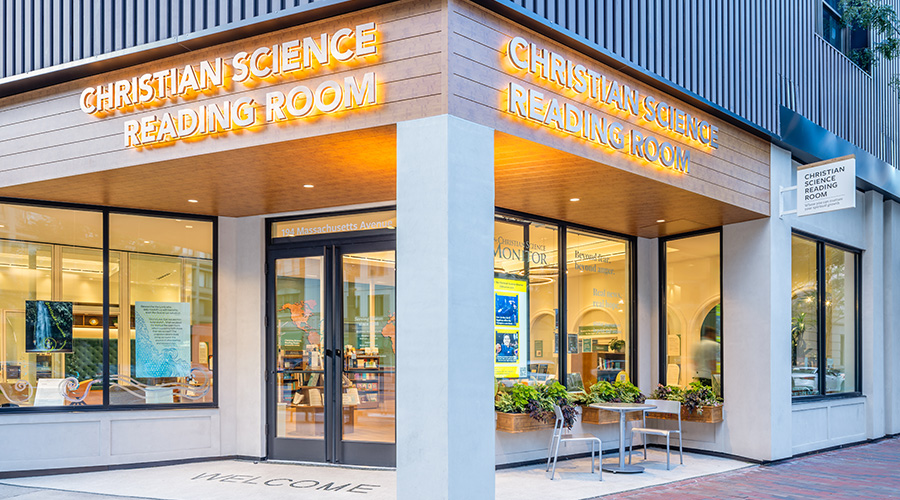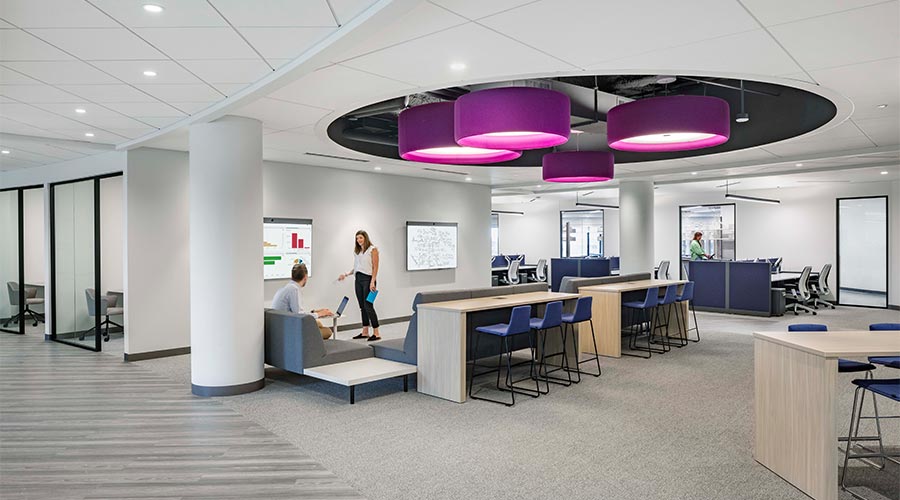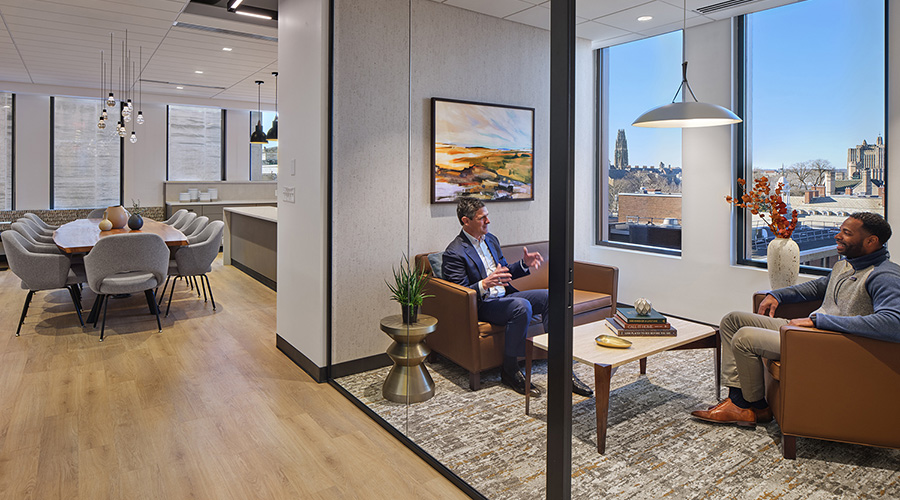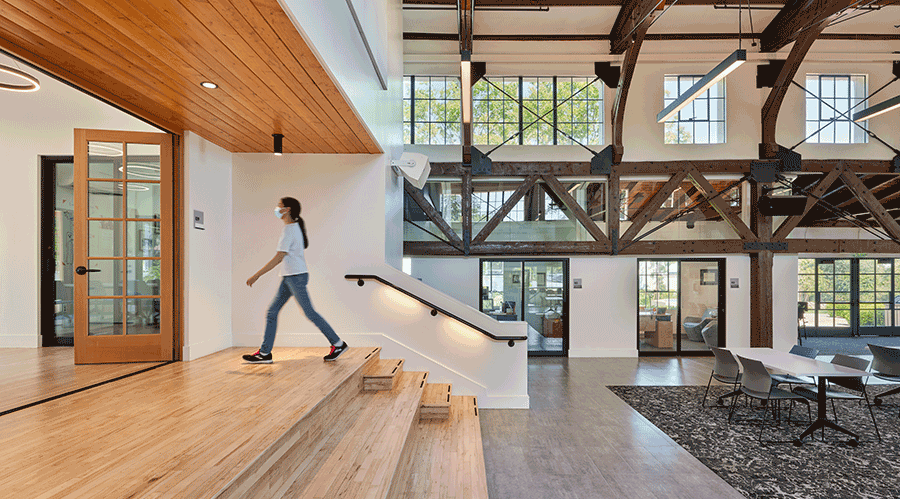Study Links Green Buildings and Employee Productivity
The idea that most people prefer working in an environment designed to be sustainable, with features such as daylighting and high indoor air quality, seems like a no-brainer. After all, who would choose a workplace that's uninviting and uncomfortable? But it's not easy to draw a firm correlation between a sustainable work environment and employee productivity. Does a green and inviting office actually spur employees to work harder and smarter?
Productivity, particularly in office environments, is difficult to measure. Few white-collar jobs — unlike, for instance, producing widgets on an assembly line — have quantifiable outputs. In addition, many factors contribute to the productivity of any group of employees.
However, both anecdotal information and more rigorous studies are emerging to support the theory that sustainable workplaces enhance productivity. Consider a recent study, "Effects of Green Buildings on Employee Health and Productivity," from the School of Planning, Design, and Construction at Michigan State University. Three researchers surveyed two groups of employees who had moved from conventional office buildings to LEED-certified buildings. Among their findings:
- The mean number of hours per month that respondents reported being absent due to allergies and asthma dropped from 1.12 pre-move to .49 post-move. Similarly, the mean number of hours survey participants reported being affected (even if they weren't absent) by allergies and asthma declined from 16.28 before the move to 6.32 after the move. That's a 60 percent decrease.
- The mean number of hours per month respondents reported being absent due to depression and stress dropped from .93 pre-move to .47 post-move. The mean number of work hours affected by depression and stress decreased from 20.21 before the move to 14.06 after — a drop of 30 percent.
One reason that green workplaces may be having a positive impact on employee productivity is the fact that we're in the "second generation of sustainable design," says Rob Moylan, sustainable corporate interiors leader with SmithGroup. Early applications of green design focused largely on materials, such as low-VOC finishes, and energy-efficient appliances. While these are key to an environmentally responsible workplace, they have less of a direct impact on employees' work.
Now, however, sustainable design considers the overall work environment. There's more emphasis on making sure employees have greater access to daylight, as well as to areas conducive to collaboration. "It's becoming more about the employee, instead of just the architecture," Moylan says.
Certain principles appear common across sites that aim for both sustainability and productivity. These include:
- Making greater use of open floor plans and workstations with fewer enclosed offices means space is used more efficiently. Additionally, collaboration is encouraged and any sense of unfairness that can occur when only some employees get offices is mitigated.
- Providing a majority of employees with access to daylight. This cuts energy use and creates a more inviting workplace.
- Incorporating segregated areas for smaller, impromptu meetings, as well as space for individual employees who need to concentrate.
- Making greater use of task lighting. Reducing overhead lighting saves energy, while task lighting offers employees greater control over their workspaces. For the same reason, many new office designs make greater use of workspace temperature controls.
- Implementing sound control systems. For employees to be productive, some sound control typically is needed in open offices.
Related Topics:













